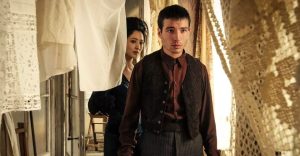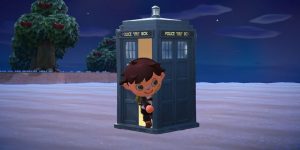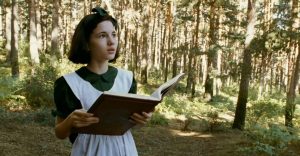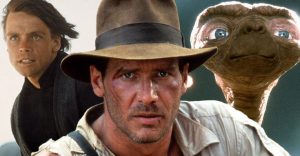Parks And Recreation: 10 Ways It Changed (For The Better) After Season 1

As with most TV series, the first season of Parks and Recreation is its weakest. The show’s writers used its initial six-episode run to figure out what does and doesn’t work about the characters and their environment, and then adjusted them accordingly as the series went forward. Luckily, NBC was willing to give the show a chance to grow.
The cast members are as great in season 1 as they were in the other six seasons, but in the subsequent years, the show’s producers figured out their actors’ strengths. Here are 10 ways Parks and Rec changed for the better after its first season.
10 Making Leslie Knope Smarter And Stronger

The most obvious post-season 1 change to Parks and Recreation is the characterization of Leslie Knope. In the first season, she’s a clueless ditz who constantly allows herself to get manipulated and spends her days pining after Mark.
Plus, she was initially criticized for being too similar to Michael Scott. The subsequent seasons made Leslie a lot smarter and stronger, which helped her to become the feminist icon that she is today.
9 Making Leslie’s Co-Workers Like Her More

In addition to making Leslie smarter, the writers made her more well-liked among her colleagues. In the first season of the show, Leslie’s co-workers hate her and roll their eyes whenever she tries to inspire them to do anything.
After season 1, this conflict shifted to more of an us-versus-the-world situation, with the outraged citizens of Pawnee being the bad guys and Leslie’s co-workers standing by her. Even characters who hate government work, like Ron and April, would do what they could to help Leslie.
8 Removing Mark And Adding Ben And Chris

The second season of Parks and Rec saw some major changes to the ensemble, as Mark Brendanawicz left the main cast (and never returned, despite Michael Schur’s promise that he would) and Chris Traeger and Ben Wyatt were added in his place.
Mark was the only dead weight in the cast. He never had any real laugh-out-loud moments and the show was better off without him. On the other hand, Chris and Ben undeniably improved the show.
7 Moving Away From The Office

The first few episodes of Parks and Rec pretty much emulate what worked in Michael Schur and Greg Daniels’ previous workplace mockumentary series, The Office. They can be forgiven for this, because Parks was initially developed as an Office spin-off, but when it was retooled into an original idea, they didn’t change it enough.
As the series went on, the writers carved out more of a unique niche for Parks to inhabit, with its own comic sensibility and take on the mockumentary format.
6 Dialing Up The Optimism

Fans discussing the differences between Parks and Rec and The Office will often note that the former is about characters who are fundamentally happy and the latter is about characters who are fundamentally unhappy.
The first season of Parks is surprisingly cynical. Subsequent seasons dialed up the optimism, and becoming more hopeful brought Parks a long way toward becoming a better show.
5 Paying Off Throwaway Lines

In the first season, we get little hints at the characters’ lives outside the local Pawnee government, like Tom being married, Mark questioning Ann’s relationship with Andy, and Ron having an ex-wife named Tammy, but these are just throwaway lines.
In future seasons, those lines were paid off as we learned Tom’s relationship with his wife was just a green-card marriage, Ann left Andy and started dating Mark, and Ron’s complicated marital history unraveled.
4 Giving Chris Pratt A Spot On The Main Cast

Andy Dwyer wasn’t supposed to remain in the Parks and Rec roster beyond the first season. He was meant to be a recurring character in season 1 who disappeared without a trace after Ann dumped him.
Thankfully, the producers recognized that Chris Pratt was one of the greatest talents on their show and gave him a spot on the main cast in season 2 onward.
3 Expanding The Worldbuilding

By the end of Parks and Rec’s seven-season run, the city of Pawnee had been fleshed out so much that it felt as thoroughly developed as The Simpsons’ setting of Springfield.
We knew about the local businesses (both big and small) and local celebrities, like TV and radio personalities, and of course, we knew all about the local government.
2 Focusing More On The Ensemble

In the first season of Parks and Rec, every episode is about Leslie, with everyone else in the parks department acting as supporting characters on her journey.
In the second season on, the show became more of an ensemble series, with everyone getting major storylines and sharing the screen time more or less evenly.
1 Letting The Actors Build On Their Own Characters

The casting process for Parks and Rec was a little different than usual TV shows. Instead of developing characters beforehand, the casting team found actors with comic personas they liked and then built the characters around them. This meant that the characters developed into well-rounded, three-dimensional people over the years, but they weren’t necessarily fleshed out from the beginning.
For example, in season 1, Ron is just a stony-faced authority figure, but by season 7, Nick Offerman had developed him into a chair-making, jazz-playing, forest-dwelling, breakfast-binging icon.
About The Author


















